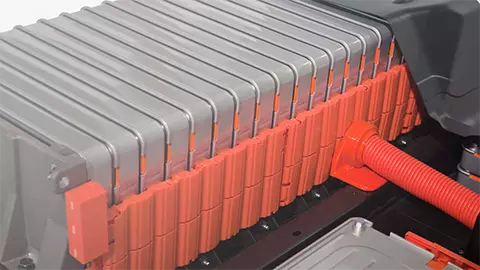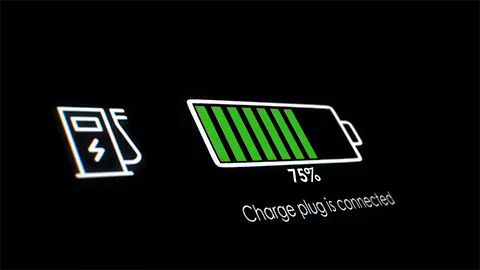Welcome to the Future of EV Batteries
The race for better electric car batteries is being called the next gold rush. Here’s what’s coming.
There are many new technologies coming that may make it easier to own and run a zero-emission vehicle. The woes of “range anxiety” and “long charging times” will soon be a thing of the past with battery packs offering over 500 miles of range between charges that only take a few seconds, and power available to you over the air.
We are at the threshold of a battery revolution. EV makers know that in order to get an EV in every garage, Americans demand more range and quicker charging. They are well aware of the limitations of the current lithium-ion batteries that power today’s EVs. While computer chips and operating systems continue to advance in saving power, battery packs have been the week link… until now.
Let’s take a look at research that may lead to an exciting new world of battery technology for tomorrow’s electric cars.
Batteries as Structural Components
Research at Chalmers University of Technology has been focusing on using new battery tech as a structural component of future electric cars. This could lead to lighter vehicles in which body parts are the batteries. Using carbon fiber as the negative electrode while the positive is a lithium iron phosphate, these batteries would be extremely stiff and rigid for structural components.
Carbon Nanotube Electrodes
NAWA Technologies has designed and patented an Ultra Fast Carbon Electrode that could change batteries as we know them. This utilizes a vertically-aligned carbon nanotube that can boost battery power ten times over current battery packs. It can also increase energy storage by a factor of three and increase the lifecycle of a battery five times over. NAWA says that charging time will be just five minutes to get to an 80 percent charge. This technology could be in production as soon as 2023.
Cobalt-Free Batteries
The University of Texas is working on a lithium-ion battery that doesn’t use cobalt as a cathode. Instead, it uses up to 89 percent nickel as well as aluminum and manganese. The motivation is that cobalt is rare, expensive, and harmful to source. The team at U of T say their batteries produce a more elegant distribution of ions as well.
A Chinese company called SVOLT is manufacturing cobalt-free batteries for the EV market. They claim to have a higher energy density, resulting in a vehicle range of up to an estimated 500 miles on a single charge.
Silicon Anode Batteries
Looking for a cure to unstable silicon in lithium-ion batteries, researchers at the University of Eastern Finland have developed a method to produce a hybrid anode that uses mesoporous silicon microparticles and carbon nanotubes. They hope to replace graphite as the anode and replace it with silicon, which has ten times the capacity. The goal is that this will improve battery performance. Best of all, the sourcing of this silicone is earth friendly as it is made from barley husk ash.
A Battery Extracted from Seawater
IBM Research has discovered a new battery chemistry that is free of heavy metals and can out-perform lithium-ion batteries. The materials are extracted from seawater. IBM says these batteries will be cheaper to make, can charge faster, and pack in higher energy density and power. The company is currently working with Mercedes-Benz to develop the technology.
Sand Batteries Offer More Life
Researchers at the University of California Riverside are working on battery technology that uses sand in order to create pure silicon to achieve three times better performance than current graphite-based lithium-ion batteries. This new pure silicon also advances the lifespan of batteries.
A battery startup company called Silnano is bringing this technology to the market through funding by Daimler and BMW promising a 40 percent boost in battery performance in the near future.
Powered by Wi-Fi
Imagine powering your car over Wi-Fi while you drive. You’d never have to recharge your battery by plugging in. While this technology is still a way off, researchers have developed a radio wave harvesting antenna that is only several atoms thick, that may be used to recharge future EVs over electromagnetic waves.
The concept involves incorporating the molybdenum disulphide rectenna so that AC power can be downloaded from Wi-Fi and converted to DC power to recharge a battery or to power an EV directly. Let’s just hope it doesn’t fry your brain at the same time.
Over the Air Ultrasound Charging
Another way to possibly transmit rechargeable power over the air is through ultrasound. A company called uBeam turns power into sound waves that can be beamed to your EV and then turned back into power. Right now, uBeam is experimenting with using this technology to power smartphones and laptops, but who knows where this might lead?
Charge Your Car in 5 Minutes
Speaking of smartphone charging, a start-up company called StoreDot that was born from the nanotech department of Tel Aviv University, has developed a charger that uses biological semiconductors. These use organic peptide compounds which are the building blocks of proteins. The result is a charger that can recharge your smartphone in just 60 seconds, and the organic compounds are non-flammable for safer charging. StoreDot is currently building batteries for EVs that will charge in five minutes and offer an estimated range of 300 miles.
Batteries that Never Die
Scientists at the University of California are working on nanowire batteries that will never die. The gold nanowires are a thousand times thinner than a human hair and sit in a gel of electrolyte to keep them from breaking down during recharging. They have been tested recharging over 200,000 times over three months and showed no sign of degradation.
Solid-State Batteries
Traditionally, solid-state batteries offer stability but at the cost of electrolyte transmissions. However, scientists at Toyota are testing a solid-state battery that uses sulfide superionic conductors for a better battery that can operate at super capacitor levels to charge in just seven minutes. Plus, being solid-state makes it safer than current battery options.
Solid Power Inc. is producing solid-state batteries for EVs using sulfide-based all-solid-state cells. Meanwhile, QuantumScape is developing solid-state batteries for Volkswagen. The hope is that these game changing batteries will be used in electric vehicles by 2026.
Zinc-Air Batteries
Researchers at Sydney University have found a way to make zinc-air batteries for much less than the costs of current methods. Zinc-air batteries are superior to lithium-ion batteries as they cannot catch on fire. The problem has been that Zinc-air batteries are made from very expensive components, but the University has found a way to use much cheaper alternatives. So, cheaper and safer batteries may soon be on the way.
Twenty Times Faster Charging
Ryden dual carbon technology allows batteries to last longer and charge faster than lithium but can be made using the same factories where lithium batteries are produced. Power Japan Plus says the batteries are more sustainable, last longer, are environmentally friendly and can charge 20 times faster than conventional batteries.
Imagine 500 Miles on a Charge
A company called Graphenano is developing a Graphene battery that it says will offer an estimated range of 500 miles and can be recharged in just a few minutes. The company says its batteries will charge and deplete 33 times faster than lithium-ion batteries.
Imagine 1,100 Miles on a Charge!
An experimental car recently drove 1,100 miles on a single battery charge. This was possible thanks to aluminum-air battery technology that uses oxygen from the air to fill its cathode - making it much lighter than liquid-filled lithium ion batteries - to give the EV greater range.
The New Gold Rush
According to the market research firm Auto Pacific, electric vehicle sales will jump four-fold in America in the next five years, climbing from two percent of car sales today to about seven percent in 2026. Demand for better and cheaper EV batteries is creating a new gold rush as university research teams, start-up companies and automakers delve into exciting new technologies and hurry to meet demand.
The goal is to develop improved EV batteries that charge faster and last longer while switching to less expensive and more environmentally-friendly materials. With our fingers on the pulse of all things in the zero-emission vehicle universe, check in with GreenCars often for information on the latest technologies that are driving the EV transportation revolution.

















